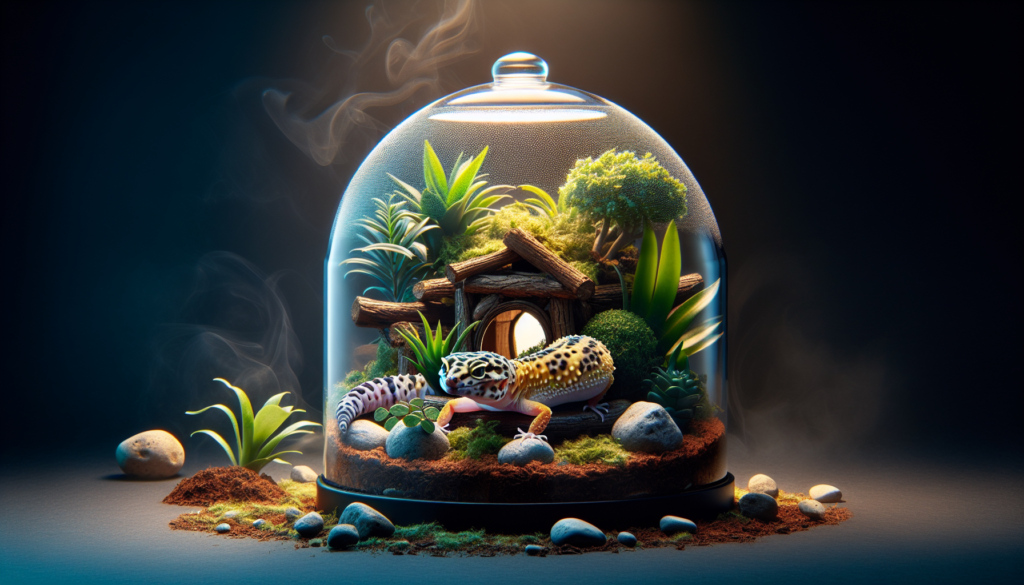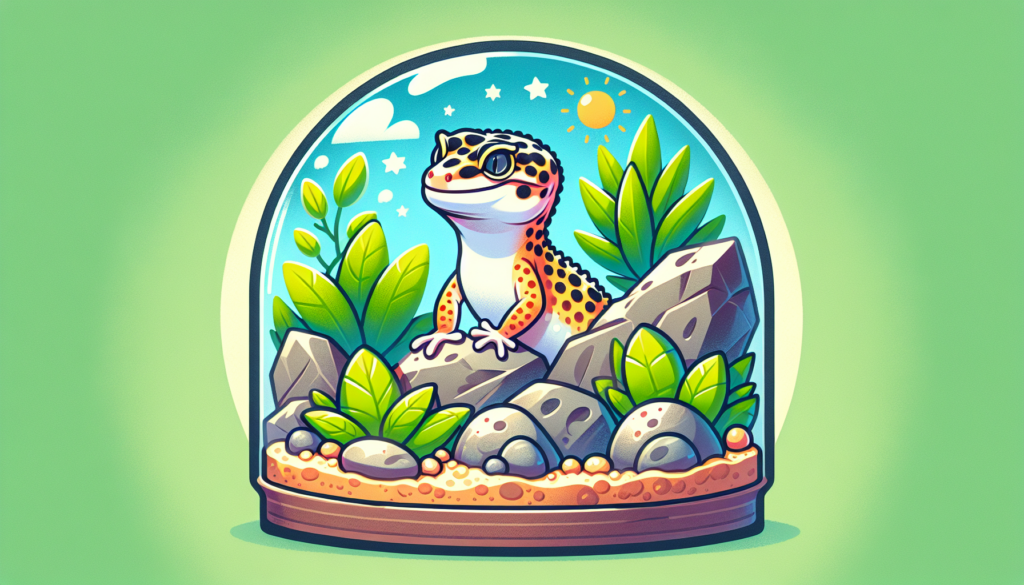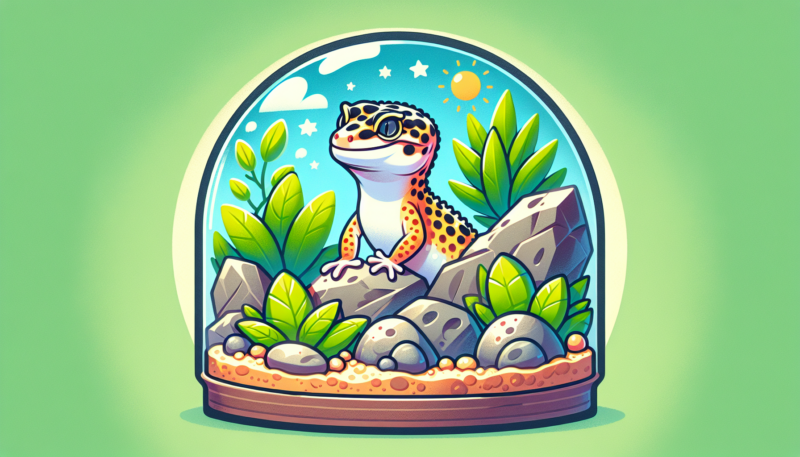Leopard geckos, a fascinating creature that captures the hearts of reptile enthusiasts around the world. But the burning question remains: are they easy to keep alive? Let’s explore the world of leopard geckos and find out what it takes to provide them with a suitable environment, proper care, and a happy, healthy life. From understanding their unique traits and habitat requirements to learning about their dietary needs, this article will provide you with all the essential information you need to know about keeping leopard geckos alive and thriving.
Housing
When it comes to housing your leopard gecko, the size of the terrarium is an important consideration. A spacious enclosure will provide your gecko with enough room to move around, explore, and exercise. The minimum recommended size for a single leopard gecko is a 20-gallon tank, but larger tanks are always better. Remember, the more space you can provide, the happier your gecko will be.
In addition to the size of the terrarium, lighting and temperature are crucial factors in creating a suitable habitat for your gecko. Leopard geckos are ectothermic, meaning they rely on external sources of heat to regulate their body temperature. You will need to set up a heat source, such as an under-tank heater or a heat lamp, to create a warm spot in the terrarium. The temperature should be kept between 88-92°F (31-33°C) on the warm side and around 78°F (25°C) on the cool side. It’s essential to monitor the temperature regularly to ensure it remains within these ranges.
To replicate the natural terrain of their native habitats, using appropriate substrates is necessary. Avoid using loose substrates like sand or gravel that can be accidentally ingested and cause impaction. Instead, opt for safe options such as reptile carpet, slate tiles, or paper towels. These substrates provide a suitable surface for your gecko to walk on, and they are easy to clean and maintain.
Providing hiding spots and decorations is crucial for the mental and physical well-being of your gecko. Leopard geckos are nocturnal and prefer dark and secure hiding spots during the day. Place several hides throughout the terrarium, such as caves, logs, or artificial plants, to create a sense of security for your gecko. Adding decorations like branches and rocks can also help mimic their natural habitat and provide opportunities for climbing and exploration.
Feeding
Understanding the dietary requirements of your leopard gecko is essential to keep them healthy and thriving. In the wild, leopard geckos primarily feed on insects, so their diet in captivity should consist mainly of live insects. Suitable insect options include gut-loaded crickets, mealworms, dubia roaches, and silkworms. It’s important to provide appropriately-sized prey items that are no larger than the width of your gecko’s head.
Establishing a feeding schedule is crucial to ensure your leopard gecko receives the necessary nutrition. As a general guideline, juveniles should be fed daily, while adult geckos can be fed every other day or three times a week. Feed them in the evening or early morning, as this aligns with their natural feeding behavior.
While a varied insect diet is usually sufficient, it may be necessary to supplement your gecko’s diet with calcium and multivitamin supplements. Calcium powder should be dusted onto the insects before feeding, while multivitamin supplements can be offered once or twice a week. These supplements help prevent calcium deficiencies and ensure your gecko receives all the necessary vitamins and minerals.
Water is also essential for your leopard gecko’s overall health and hydration. Provide a shallow and stable water dish filled with fresh, clean water. It’s important to check the dish daily and refill it when necessary. Leopard geckos may not drink directly from the dish but may choose to lick water droplets from surfaces. Keep the water dish clean and remove any debris or waste to maintain a hygienic environment.

Handling and Bonding
Proper handling techniques are crucial for creating a bond with your gecko while ensuring their safety and well-being. Remember, leopard geckos have delicate bodies and can easily be injured if mishandled. To handle your gecko correctly, gently scoop them up from underneath, supporting their body and limbs. It’s important to avoid grabbing or squeezing the gecko tightly, as this can cause them distress.
Building trust with your gecko takes time and patience. Start by spending time near the terrarium, allowing your gecko to become accustomed to your presence. Offer them treats by hand, such as small mealworms or dubia roaches, to associate your scent and touch with positive experiences. Consistency is key, so handle your gecko regularly but in short periods at first, gradually increasing the duration as they become more comfortable.
Bonding with your gecko goes beyond handling. Interact with them outside of their terrarium by providing a safe play area. Supervised exploration on a smooth surface, like a table, can be an enriching experience for them. Remember to provide hiding spots in the play area to make them feel secure. Bonding with your gecko is a process that takes time, but the rewards of a trusting and interactive relationship are worth the effort.
Healthcare Basics
Regular veterinary care is essential to ensure your leopard gecko remains healthy and to catch any potential issues early. Schedule regular check-ups with a reptile-experienced veterinarian who can provide necessary vaccinations, perform routine examinations, and address any concerns you may have. Regular veterinary care is crucial in maintaining the overall well-being of your gecko.
Knowing the signs of illness in your leopard gecko is essential for early detection and prompt medical attention. Some common signs of illness include weight loss, changes in appetite or drinking behavior, abnormal bowel movements, lethargy, respiratory distress, and visible skin abnormalities. If you notice any of these signs, it is important to consult with a veterinarian to determine the underlying cause and seek appropriate treatment.
Maintaining a clean and hygienic environment is vital for the health of your gecko. Spot clean the terrarium regularly, removing any feces or uneaten food. A thorough cleaning of the entire terrarium should be done at least once a month. Clean all surfaces, decorations, and substrate using reptile-safe disinfectants, ensuring they are rinsed thoroughly before returning them to the terrarium. Good hygiene practices help prevent the spread of bacteria and parasites, contributing to the overall well-being of your gecko.

Shedding
Like all reptiles, leopard geckos shed their skin periodically as they grow. Understanding the shedding process and providing proper humidity is crucial for a smooth shedding experience. During the shedding process, you may notice your gecko’s skin becoming dull and opaque before peeling off in small pieces.
To promote proper shedding, maintain a humidity level between 40-50% in the terrarium. This can be achieved by misting the enclosure lightly with water or placing a moisture box filled with damp sphagnum moss. The moisture box provides a specific area where your gecko can go to aid in shedding. It’s important to monitor the humidity level closely, as excessive humidity can lead to respiratory problems, while low humidity can cause the skin to dry out and become difficult to shed.
Assisting with shedding is essential if your gecko is experiencing difficulties. This can be done by creating a humid hide using a small container filled with damp paper towels or sphagnum moss. Place the gecko inside the humid hide, ensuring it has easy access, and allow them to remain there until shedding is complete. The humidity and moisture will soften the old skin, making it easier for your gecko to remove.
Breeding
Breeding leopard geckos can be a complex and time-consuming process, best undertaken by experienced reptile breeders. Successful breeding requires careful consideration and preparation to ensure the health and viability of the hatchlings. The mating process involves introducing a receptive female to a male, monitoring their interactions to ensure successful mating.
After successful mating, the female will lay eggs within a few weeks. It’s crucial to provide appropriate nesting and egg-laying areas within the terrarium. Options include laying boxes filled with a suitable egg-laying substrate, such as damp vermiculite or perlite. Temperature and humidity levels should be carefully monitored during the incubation period to ensure proper development and hatching of the eggs.
Caring for eggs and hatchlings requires additional attention and resources. The eggs should be incubated at a specific temperature and humidity level to ensure proper development. Hatchlings require smaller enclosures, appropriate heating, and a diet consisting of properly-sized live insects. It’s important to research and understand the specifics of breeding and caring for eggs and hatchlings before considering this endeavor.
Temperament
Leopard geckos are generally docile and easy to handle, making them popular pet reptiles. They have a calm temperament and rarely bite unless severely provoked or stressed. Understanding their characteristics can help you provide the best care and recognize any behavior changes or concerns.
Leopard geckos are nocturnal, which means they are most active during the night. They spend their days resting, hiding in secure spots throughout the terrarium. Due to their nocturnal nature, they may not appreciate frequent handling during the day, as it disrupts their natural sleep cycle.
Leopard geckos are solitary creatures and prefer to be housed alone. Housing multiple geckos together can increase the risk of aggression, stress, and diseases. If you wish to house multiple geckos, ensure you have enough space and resources to accommodate each individual gecko’s needs.
Socialization
While leopard geckos are solitary by nature, they can still benefit from social interactions, both with other geckos and with humans. If you choose to introduce multiple geckos into the same terrarium, make sure the enclosure is large enough to provide each gecko with their own space. It’s important to carefully monitor their interactions and be prepared to separate them if any signs of aggression or stress occur.
Interacting with humans can help build a bond and trust between you and your gecko. Spend time near the terrarium, talking softly and offering treats. This not only helps familiarize your gecko with your presence but also provides an opportunity for them to associate you with positive experiences. Remember to be patient and give your gecko time to adjust to your presence and touch.
Common Mistakes
Avoiding common mistakes can greatly contribute to the health and well-being of your leopard gecko. One common mistake is an improper habitat setup. Inadequate tank size, incorrect temperatures, and inappropriate substrate choices can lead to stress, illness, or injury. Always research and provide the necessary elements for a suitable habitat.
Another common mistake is an inadequate diet. Feeding the wrong types or sizes of prey, or neglecting to provide essential supplements, can result in nutritional deficiencies or health issues. Ensuring a varied diet of appropriate-sized live insects, dusted with calcium and multivitamin supplements, is crucial for your gecko’s overall health.
Using incorrect handling techniques is also a common mistake made by new owners. Rough handling or gripping the gecko tightly can cause stress, injury, or even lead to them dropping their tails. Always handle your gecko gently, with support under their body and limbs, to avoid any harm.
Costs and Commitment
Owning a leopard gecko comes with financial responsibilities and requires a commitment of time and dedication. Initial setup expenses can include the terrarium, heating equipment, lighting fixtures, hides, substrate, and other essential accessories. It’s important to invest in quality and appropriate equipment to ensure your gecko’s well-being.
Regular maintenance costs should also be considered, including the cost of live insects and supplements, as well as periodic replacement of substrates and other consumable items. Additionally, veterinary care costs, such as routine check-ups and potential medical treatments, should be factored into your budget.
Leopard geckos require daily care and attention. You will need to spend time feeding, cleaning, and monitoring their health and behavior. While they may not require as much interaction as some other pets, they still rely on you for their well-being. The time and dedication required to properly care for a leopard gecko should not be underestimated.
In conclusion, keeping a leopard gecko alive and thriving requires careful attention to housing, feeding, handling, healthcare, shedding, breeding, temperament, socialization, and avoiding common mistakes. With the right knowledge, resources, and commitment, you can provide a safe, comfortable, and enriching environment for your leopard gecko, ensuring their happiness and longevity as your beloved pet.
